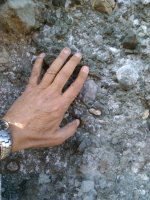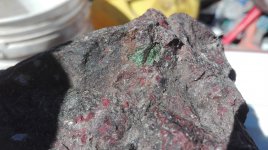Jim in Idaho
Silver Member
- Jul 21, 2012
- 3,349
- 4,750
- Detector(s) used
- White's GM2, GM3, DFX, Coinmaster, TDI-SL, GM24K, Falcon MD20, old Garrett Masterhunter BFO
'Way Too Cool' dual 18 Watt UV light
- Primary Interest:
- Prospecting
The wife and I found this last weekend while crusing some rough country in northern Nevada, It was lying next to a two-track, and I spotted the greenish cast as we drove by. The rock in that country is almost all dark brown, or dark reddish brown, either basalt, or rhyolite lava. This rock was a definite an anomaly. I don't know if there was an outcropping that got hooked by the blade of the patrol, or if the rock was hauled in from somewhere else. Didn't have time to do much looking around. Probably won't get back there until spring. If any of you guys, or gals has an idea, please post up.
Thanks, Jim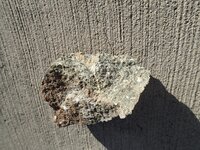
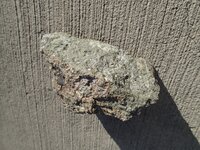
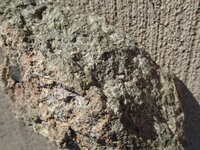
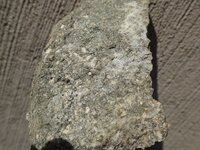
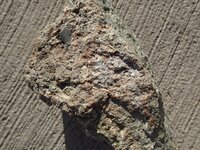
Thanks, Jim





Last edited:



